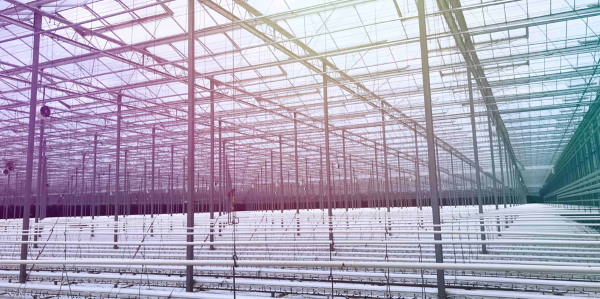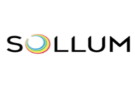“The horticultural sector is just at the beginning of understanding the impact of lighting on plants; that has been enabled by LEDs,” says Louis Brun, president and CEO of Sollum, a lighting manufacturer based in Montreal.
Sollum considers itself the only smart LED lighting solution on the market, with the fundamental difference in the company’s approach being its emphasis on “taking Mother Nature as the starting point then building agricultural processes around that,” according to Brun. Sollum works with its customers to build dynamic LED lighting solutions tailored to their current needs, but with the flexibility to adapt to changes in production, best practices, etc. While Sollum provides solutions to indoor farms, the company’s main focus has been on the implementation of its lighting solutions in greenhouse. That said, the use of LEDs in greenhouse has historically been eclipsed by high-pressure sodium (HPS) lighting.
“HPS lighting requires a lot of electricity, generates heat and contains hazardous material but despite this, their benefits have been clearly demonstrated. With traditional LEDs, the only value addition in greenhouses has been an increased energy efficiency. Sollum is changing that paradigm,” says Brun. Sollum’s LED lighting creates a smart layer of light, which can apply various light conditions and integrate data from emerging research, allowing the grower to evolve his/her lighting practices without requiring a new system at every turn.
To demonstrate the scalability of smart LED lighting, Sollum has partnered with Allegro Acres in southern Ontario to deploy its lighting in a commercial greenhouse setting. Gene Ingratta, president of Allegro Acres, says that Sollum’s smart LED lights will be fully deployed over four acres by mid-November, allowing Allegro Acres to do what few, if any, commercial growers in North America have succeeded in doing: producing a winter crop of bell peppers.

Allegro Acres, a family-owned greenhouse pepper farm operating in southwestern Ontario
Where conventional lighting typically turns light on or off depending on ambient light conditions, Sollum’s lighting solution will allow Allegro Acres to analyze ambient light conditions then provide complementary lighting. What this amounts to, according to Ingratta, is the ability to “mimic the Sun from any part of the world. If [a certain geographic region] has been shown to have the best lighting for greenhouse peppers, then we can apply that recipe here.”
“The system also mimics sunrise and sunset, so it will wake the plants up slowly [as occurs naturally] rather than simply shocking the plant with bright light,” explains Ingratta. He adds that “the smart LED lighting will also be more efficient and result in less light pollution [than conventional HPS lighting].”

Sollum’s patented smart lighting technology uses the fixture’s capacity to modulate the full spectrum of the Sun’s natural light
Once deployed, Allegro Acres hopes to experiment with the lights to gain better fruit quality, a higher nutrient content, and a more consistent harvesting schedule. For Sollum, 2020 has been about stepping into a greenhouse and conducting a commercial-size demonstration of the company’s technology.
For more information: Sollum Technologies
Sollum Technologies
sollumtechnologies.com
